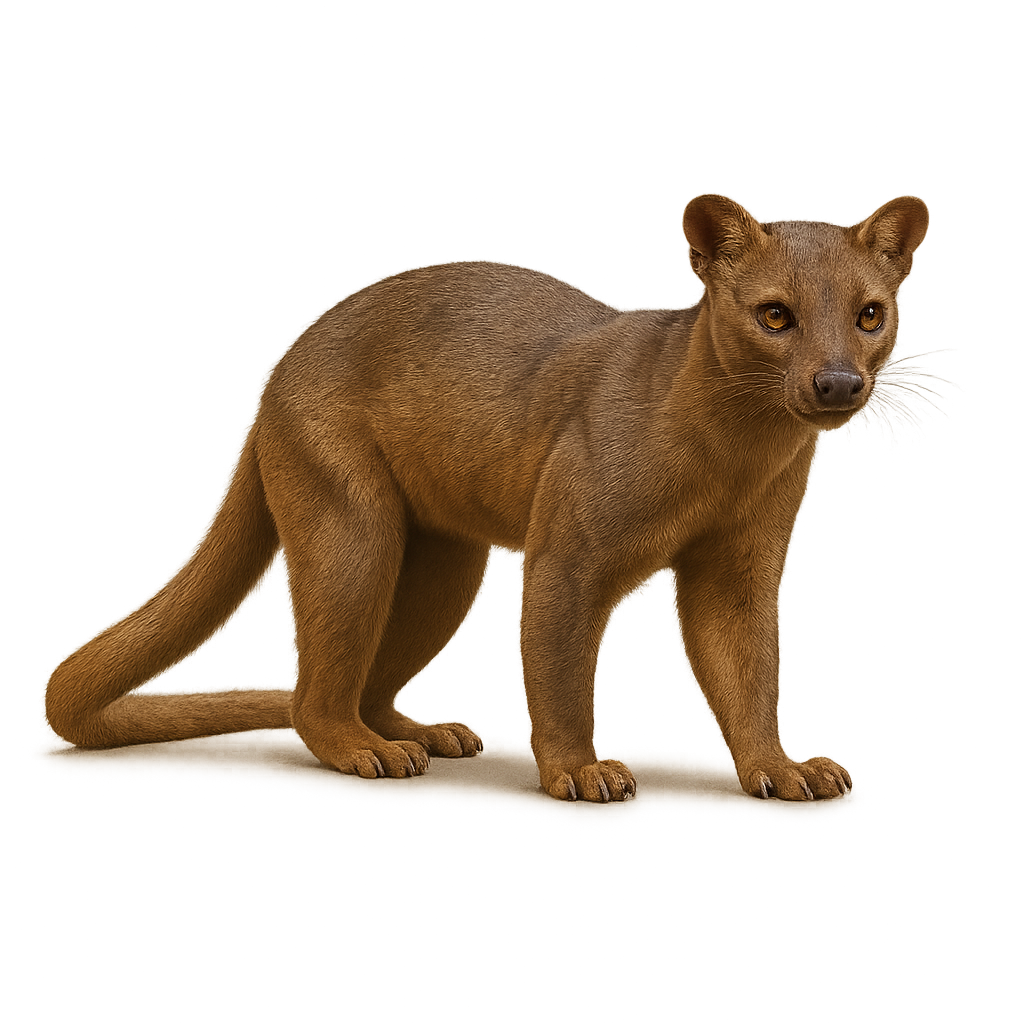Your wildlife photography guide.
Explore the fossa in detail, study its behavior, prepare your shots.
Where to observe and photograph the fossa in the wild
Learn where and when to spot the fossa in the wild, how to identify the species based on distinctive features, and what natural environments it inhabits. The WildlifePhotographer app offers tailored photography tips that reflect the fossa’s behavior, helping you capture better wildlife images. Explore the full species profile for key information including description, habitat, active periods, and approach techniques.
Fossa
Scientific name: Cryptoprocta ferox

IUCN Status: Vulnerable
Family: HERPSTIDAE
Group: Mammals
Sensitivity to human approach: Suspicious
Minimum approach distance: 10 m
Rut period: August to September
Gestation: 90-105 jours
Births: November to December
Habitat:
Tropical rainforests
Activity period :
Active intermittently throughout day and night.
Identification and description:
The Fossa is a carnivorous predator endemic to Madagascar, a unique mix between a feline and a mongoose, with a sleek body and a long tail. It is the largest land predator on the island, primarily feeding on lemurs, but also small mammals, birds, and reptiles. The Fossa is particularly agile and capable of climbing, but it often prefers to hunt its prey on the ground. Although secretive and difficult to observe, it plays an important role in the ecosystem of Madagascar. The Fossa is endangered due to the loss of its natural habitat.
Recommended lens:
400 mm – adjust based on distance, desired framing (portrait or habitat), and approach conditions.
Photography tips:
Photograph the Fossa using a telephoto lens to capture its agile movements between trees. Since this species is difficult to observe, it's best to visit tropical forests at dawn or dusk, when the light is soft and the Fossa is more active. Be patient and discreet, maintaining a respectful distance to avoid disturbing the animal.
The WildlifePhotographer App is coming soon!
Be the first to explore the best nature spots, track rutting seasons, log your observations, and observe more wildlife.
Already 1 429 wildlife lovers subscribed worldwide

